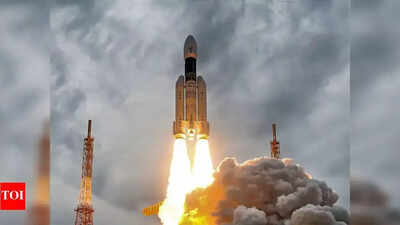Space exploration is set for a transformative period, commencing in 2025, with an array of missions poised to revolutionize our understanding of the Moon, Mars, and the vast expanse beyond. Spearheaded by leading space agencies such as NASA, ISRO, ESA, and JAXA, alongside private sector initiatives, these endeavors promise to propel scientific progress, foster technological breakthroughs, and pave the way for future human presence in space. From crewed missions orbiting the Moon to robotic probes exploring distant celestial bodies, here are the top 10 space missions to anticipate in the coming years.

The IM-3 mission, a cornerstone of NASA’s Commercial Lunar Payload Services (CLPS) initiative, is designed to establish a sustainable presence on the Moon. It will deploy advanced instruments to scrutinize the lunar surface, including rovers capable of traversing and analyzing the terrain. Beyond scientific exploration, IM-3 will test innovative landing technologies and autonomous systems, crucial for upcoming crewed Artemis missions. Success in this mission will bolster confidence in commercial partnerships supporting lunar exploration.
ESCAPADE comprises two compact satellites, named "Blue" and "Gold," orbiting Mars at varying altitudes. This setup aims to provide a comprehensive understanding of how solar winds erode the Martian atmosphere. This process is critical to unraveling why Mars transitioned from a potentially habitable world to the cold desert observed today. The mission's data will refine models of planetary atmospheres and contribute to assessing Mars' past habitability.
NISAR represents a collaborative endeavor between NASA and ISRO, equipped with dual-frequency radar capable of penetrating clouds and darkness to generate detailed maps of Earth's surface. It will monitor land deformation caused by earthquakes and volcanic activity, track deforestation, and assess ice sheet dynamics. This mission will deliver timely data to enhance disaster response and deepen insights into the impacts of climate change, serving as an invaluable resource for scientists and policymakers worldwide.
Artemis II signifies NASA's return to crewed lunar missions after several decades. Four astronauts will orbit the Moon aboard the Orion spacecraft, propelled by the Space Launch System (SLS). This 10-day mission will evaluate life support, navigation, and communication systems in the deep space environment, ensuring preparedness for the subsequent Artemis III landing mission. Artemis II is a pivotal step towards establishing a sustained human presence on the Moon.
Gaganyaan-2 is an integral part of India's ambitious human spaceflight program. These uncrewed test flights will thoroughly assess the spacecraft's critical systems, encompassing environmental controls and emergency procedures. These tests are vital to ensuring astronaut safety for the planned Gaganyaan-3 mission. Successful completion will position India among the elite nations capable of independently sending humans into space, marking a significant achievement in its space capabilities.
Dragonfly is an innovative rotorcraft lander engineered to traverse Titan's diverse and complex terrain. Titan’s dense atmosphere and abundance of organic molecules make it a prime location for studying prebiotic chemistry and the potential for life beyond Earth. Dragonfly will analyze surface composition, weather patterns, and chemical processes, providing unprecedented insights into the formation of life's building blocks in environments markedly different from our own.
JAXA’s MMX mission seeks to resolve the enigma surrounding the origins of Mars’ moons by collecting samples from Phobos. The mission will also conduct detailed observations of Deimos. Determining whether these moons are captured asteroids or formed from Mars itself will illuminate the history of the Martian system and the early solar system. The sample return is a complex undertaking that will provide invaluable material for laboratory analysis on Earth.
ESA’s Space Rider is a reusable, autonomous spaceplane designed to transport payloads for scientific and technological experiments in microgravity. It will facilitate longer-duration studies on biological processes, materials science, and plant growth, aiding researchers in understanding how space conditions impact various systems. Its reusability reduces costs and enhances access to space for European researchers and industry.
SPHEREx will map the entire sky in infrared light, yielding a wealth of data about the universe’s structure and history. It will investigate the origins of galaxies, measure the fingerprints of cosmic inflation, and explore the enigmatic dark energy driving the universe’s accelerated expansion. This mission promises to answer fundamental questions about the cosmos with unprecedented precision.
VERITAS will generate high-resolution maps of Venus’ surface using radar to penetrate its thick clouds. By studying Venus’ tectonic activity and volcanic processes, the mission aims to elucidate why Venus evolved so differently from Earth despite their similar size and composition. VERITAS will also help assess Venus’ potential for past habitability and provide context for comparative planetology.
These missions epitomize the forefront of space exploration, integrating human spaceflight, robotic explorers, and Earth observation to expand our understanding of the solar system and our home planet. As they launch and unfold over the next decade, they will catalyze new discoveries and redefine humanity’s place in the cosmos.
Newer articles
 Earth's Spin Accelerating: Scientists Predict Potential 'Negative Leap Second' by 2029
Earth's Spin Accelerating: Scientists Predict Potential 'Negative Leap Second' by 2029
 5 Subtle Signs of Cervical Cancer Women Often Miss
5 Subtle Signs of Cervical Cancer Women Often Miss
 Hair Oil vs. Hair Serum: Choosing the Right Treatment for Your Hair Type
Hair Oil vs. Hair Serum: Choosing the Right Treatment for Your Hair Type
 Steven Smith Targets Test Return After Unique Baseball Cage Recovery in New York
Steven Smith Targets Test Return After Unique Baseball Cage Recovery in New York
 Bollywood's Enduring Fascination with Indian Mythology: From Ramayana to Modern Blockbusters
Bollywood's Enduring Fascination with Indian Mythology: From Ramayana to Modern Blockbusters
 Liver Disease: 5 Subtle Warning Signs You Shouldn't Ignore
Liver Disease: 5 Subtle Warning Signs You Shouldn't Ignore
 Heart Attack Warning: Key Signs That Can Appear Weeks in Advance
Heart Attack Warning: Key Signs That Can Appear Weeks in Advance
 New Zealand Announces Packed Home Cricket Schedule Featuring Australia, England, West Indies, and South Africa
New Zealand Announces Packed Home Cricket Schedule Featuring Australia, England, West Indies, and South Africa
 Wimbledon Upset: Bhambri & Galloway's Doubles Run Halted in Tiebreak Thriller
Wimbledon Upset: Bhambri & Galloway's Doubles Run Halted in Tiebreak Thriller
 Daren Sammy Fined, Receives Demerit Point for Third Umpire Criticism After Test Match
Daren Sammy Fined, Receives Demerit Point for Third Umpire Criticism After Test Match